With Yuzuru Hanyu taking home Japan’s first-ever gold medal in men’s figure skating, there’s a chance the country’s rabid sports fans will back off on the intense pressure they’ve been placing on the nation’s Olympic team. That’s sure to be a weight off the shoulders of the athletes themselves, as well as former Olympiad Dai Tamesue, who recently took so-called fans of the Japanese team to task for calling athletes who fail to reach the podium parasites.
Posted by Casey Baseel (Page 518)
As media consumption patterns change in Japan, leading to less advertising revenue and lower DVD sales, merchandising is becoming an increasingly important way for anime producers to turn a profit. Not that the hardcore fans mind being given the opportunity to purchase a poster or coffee mug featuring their favorite character, mind you. And if the products happen to be limited editions, with the premium pricing such a designation entails, well that’s just a nice extra bit of otaku cachet.
One fan, though, is selling off his entire collection in one all-inclusive package. Quite often this sort of thing is the result of finding a flesh and blood girlfriend who doesn’t approve of decorating your walls with pictures of scantily-clad anime babes, but the reason for this collector’s fire sale isn’t anything nearly so happy.
There are certain meats you can find at restaurants in Japan that aren’t exactly common in the western world. Whale is the one most likely to get foreign visitors up in arms, but with some pretty extensive searching, you can also find establishments serving up monkey and frog.
That isn’t to say Japanese culinary/cultural values are completely different from those of Europeans and North Americans. For example, people in Japan don’t really believe in turning dogs into food.
But turning food into a dog? That’s something the whole world can get behind.
While Japan has its own baseball and soccer leagues, the steady improvements in ability by Japanese players have ironically led to a talent drain in domestic games, as the best players get recruited to compete on bigger stages in the U.S. and Europe. These days, what really gets Japanese sports fans fired up is international competitions like soccer’s World Cup and the Olympic Games.
With the Winter Olympics going on right now in Sochi, Japanese TV is filled with nonstop onsite reports from the Russian city. In the scramble to get as much content as possible, though, one news outlet sent out its reporter so woefully unaware that he didn’t recognize the two Olympic medalists standing right in front of him, one of whom he was having a conversation with.
Despite being some of the most iconic anime villains ever, we’re still not sure how to feel about the monsters of Attack on Titan. On the one hand, they’re giants hell-bent on eating the tasty humans hiding behind the walls of their cities. On the other hand, there’s something unmistakably, well, goofy about them. Many of them have baby-like proportions and dorky haircuts. Quite often, they shuffle around listlessly, almost as if they can’t be bothered to chase after their terrified snacks. They have no concept of pants.
Somehow, the Titans have ended up with a sort of twisted charm that makes us unsure whether we’d rather fight them or keep them as pets. Luckily, with the new Attack on Titan smartphone game, you can do both!
Every year at Valentine’s Day, a slew of limited-edition chocolates are rolled out in Japan, where following the local custom, women give gifts to men. Unfortunately, while there are indeed plenty of guys with a sweet tooth, few of them really want candies shaped like butterflies and rosebuds.
Thankfully, there are a handful of more masculine alternatives, such as the Final Fantasy chocolates we recently introduced you to. But you know what’s even more manly than a video game about a dude killing monsters with a giant sword while his hot martial artist girlfriend cheers him on? Booze. Which is why today we’re knocking back a mint chocolate beer.
A grisly truth is coming to light as Japan’s Tohoku region recovers from the massive earthquake and tsunami that occurred in 2011. When the water receded from damaged areas, it took much of what had been struck, including the bodies of victims.
Nearly three years have passed since the disaster, but there are still residents of the afflicted area classified as missing. As the country moves on and begins to turn its focus to more pressing matters, one 57-year-old man seeking closure has decided to venture into the sea that claimed his wife to personally search for her remains.
For the most part, grocery shopping in the Tokyo area is a small-scale affair. The majority of shoppers go to the store on foot and carry their purchases home, meaning that each residential neighborhood has a number of small markets to ensure consumers don’t have to lug their bags more than a few blocks.
However, with a little over 15 years’ experience since opening its first store in Japan, mega retailer Costco has converted a number of the locals to its “bigger is better” philosophy. As you’d expect, Costco gives customers in Japan the chance to save by buying in large quantities, and also serves up hot meals in its food court, just like in other countries.
One thing that’s different about the food court at Costco in Japan, though, is the menu, which includes a Korean fusion item called the bulgogi bake.
Shigeru Mizuki is one of Japan’s most loved comic artists, having created the manga Ge Ge Ge no Kitaro in 1959. Although the serial ended after a 10-year run, the light-hearted story about the traditional Japanese spirits called yokai still has a strong following today, thanks to multiple animated and live-action adaptations premiering as recently as 2008.
Mizuki isn’t resting on his laurels either, despite turning 92 next month. He started a new manga series just last December, and the energetic nonagenarian has recently released a book cataloguing the eating habits that have resulted in his long life. So what does his diet consist of? A surprisingly large amount of junk food.
Most socializing in Japan is done in groups, and while there’s definitely something to be said for the “the more the merrier” philosophy behind it, that same social norm can sometimes work against a person’s love life. Sure, a guy might have a thing for a girl who he’s in the same school club with, but it can be hard to take the relationship to the next level if they never have any time alone together. On the opposite side of the scale, if there’s no one who strikes a man’s fancy in his immediate social circle, expanding his network of acquaintances, and with it his dating pool, can be a tricky endeavor to pull off.
The end result is a number of men in Japan who don’t enter into a serious romantic relationship until they’re well into adulthood. Luckily, this isn’t a complete deal breaker for them, but that lack of experience does change the playing field, as shown in a survey of 206 Japanese women in their teens, twenties, and thirties who shared their hopes and concerns about being a guy’s very first girlfriend.
Chiba Prefecture’s Wonder Festival is a bi-annual figure and model expo. The event’s bread and butter is figurine of anime and video game characters, in both frighteningly realistic and sexily unrealistic varieties.
But while the first thing most people associate with the event is toys, if your model is made of metal instead of plastic or urethane, and it’s self-propelled to boot, you’ve crossed the line of three-dimensional art and moved into straight-up engineering. Of course, Wonder Festival’s exhibitors aren’t going to stray too far from their fanciful roots, so what do you get when you combine technology with science fiction? You get this amazing giant robot, which is so easy to pilot that attendees could test drive it.
Japan takes customer service very seriously, something that’s easy to see when even convenience store clerks are so dedicated to their job they’ll ask if you want your hot and cold purchases bagged separately, or else build a protective barrier between them. Hospitality standards are no joke, either, as illustrated by the tasks traditional innkeepers are expected to perform, such as carrying the dishes and utensils for full-course meals into and out of guests’ rooms.
It’s no surprise, then, that travelers in Japan have plenty of stories to tell about attentive inns and hotels, such as the 12 below from an online survey by web portal My Navi Woman in Japan.
Last Sunday, while the Tokyo area was still blanketed in white from the previous day’s snowstorm, we braved the cold and made the trip out to Makuhari Messe in Chiba Prefecture for the winter installment of Wonder Festival. The bi-annual model expo is packed with the latest anime and video game-inspired figurines, including a fully-operational robot suit and hyper-realistic sculpture of one of Attack on Titan’s monsters from the torso up.
But the Attack on Titan figure wasn’t the only giant bust on display, as there was also a life-size statue of voluptuous anime character Super Sonico. In keeping with her exotic dancer-quality figure, though, her display area had some strip club-style rules, such as no groping allowed.
Some hardcore fans of manga comics take their devotion to an almost religious fervor. So strong is their enthusiasm that Osamu Tezuka, the medium’s more prolific and prominent pioneer, is commonly referred to as “The God of Manga.”
Manga, however, is far from a monotheistic religion, and in the 25 years since his passing, other artists have seen their creations go on to achieve the same fame and popularity as Tezuka’s. A recent survey of 24,420 Japanese comic fans recently chose four other artists for the pantheon.
As its popularity continues to grow, Attack on Titan seems to be seeping into the real world more and more, whether with figurines (in both hyper-realistic and, well, potato versions) or replicas of the heroes’ 3-D maneuver gear. Soon, though, fans will have a chance to reverse the trend and experience the world of the hit anime first-hand at a series of Attack on Titan-themed escape games.
Last weekend I was at a department store in Tokyo, and since Valentine’s Day is coming up, the confectionary section was packed with candy makers hawking limited-edition chocolates for the romantic holiday. As I looked at all the sweetness on display, though, something struck me.
In Japan, women give chocolate to the special guy in their life, but the aesthetics are still entirely feminine. I saw dozens of candies shaped like hearts, ribbons, and even teddy bears and other cute woodland animals.
While the craftsmanship was impressive, none of the designs were the sort of things men actually want for themselves, especially when they could have these awesome Final Fantasy chocolates instead.
The monthly comics anthology Nakayoshi is the oldest of Japan’s big three girls manga magazines, debuting months before rival Ribon and decades ahead of Ciao. Most of Nakayoshi’s readers are elementary and junior high school girls, but with over 50 years in circulation, there are generations of adult women who grew up reading its titles such as Princess Knight, Sailor Moon, and Cardcaptor Sakura.
One such former Nakayoshi kid is our Japanese correspondent Anji. While Anji’s a little older than the magazine’s target market, she was recently enticed into buying her first issue in years by the freebie included with Nakayoshi’s March issue: a perfume set that allows you to mix your own fragrances.
That cool giveaway wouldn’t be the only thing that surprised her about the magazine she used to know, however.
Despite my work address being “The Internet,” my personal use cell phone actually isn’t a smartphone. Maybe it’s a result of spending several hours a day looking at websites, but to me there’s still just something that feels right about a compact phone that folds shut with an oddly satisfying snap, even if the sound provokes a Pavlovian response of laughter from any technophiles in earshot.
But like skinny ties and 8-bit video game graphics, it seems like flip phones aren’t quite ready to fade away entirely. As a matter of fact, busting out an old school flip phone in Japan just might make a man more attractive to women.
In many ways, Japan is a wonderland of desserts, a place with cherry blossom lattes, roasted tea parfaits, and even suicide-themed bean cakes. Still, the country is rather lacking when it comes to donuts. The indigenous Mr. Donut chain has branches all over, but while their products are indeed tasty, they’re usually a little on the bland side.
If you want the full-fledged flavor of an authentic donut, you’ve got to visit one of the American outfits in Japan, such as Krispy Kreme or Donut Plant. Unfortunately, Donut Plant locations are few and far between, and the lines at Japan’s Krispy Kremes are ridiculously long, so there’s no way for us to get our hands on the real deal without a bit of time and travel.
Since we’d already tossed subtlety out the window as far as flavor is concerned, we decided to do the same for the scale of our search for donut satisfaction. We hopped on a plane, leaving the Land of the Rising Sun and heading for the Land of the Ring-Shaped Cake, America.
As completely fictitious forms of media, we usually don’t see the characters in anime and manga suffering the physical ill effects of their action-packed lifestyles. Shouldn’t Evangelion’s Shinji have severe whiplash from all the times his scrawny frame gets tossed around while piloting his giant robot? How does Kenshiro, hero of post-apocalyptic epic Fist of the North Star, not get a wicked eye infection after spending the whole of his adult life wandering a desert wasteland without so much as bottle of eye drops?
The answer, of course, is that those aren’t what Evangelion and Fist of the North Star are about (they’re about turning humanity into delicious Tang and making dudes’ heads explode, respectively). But by skipping over these real world problems, are creators missing an opportunity to make their characters more nuanced, relatable, and ultimately, attractive?
At least one artist seems to think so, as a new manga series has just begun featuring a cast of handsome men all suffering from physical ailments such as hay fever and stiff shoulders.

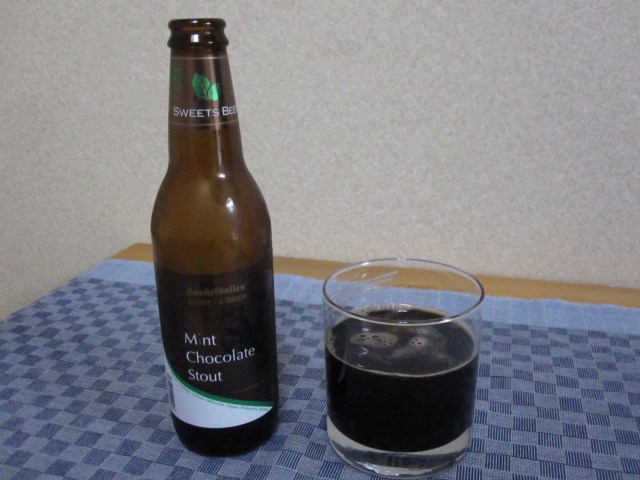
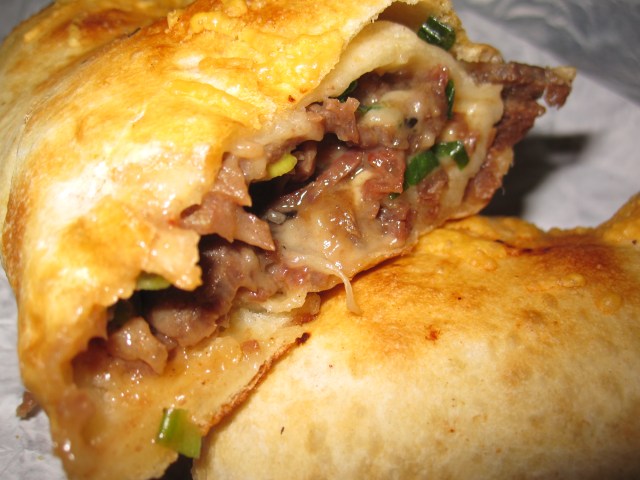
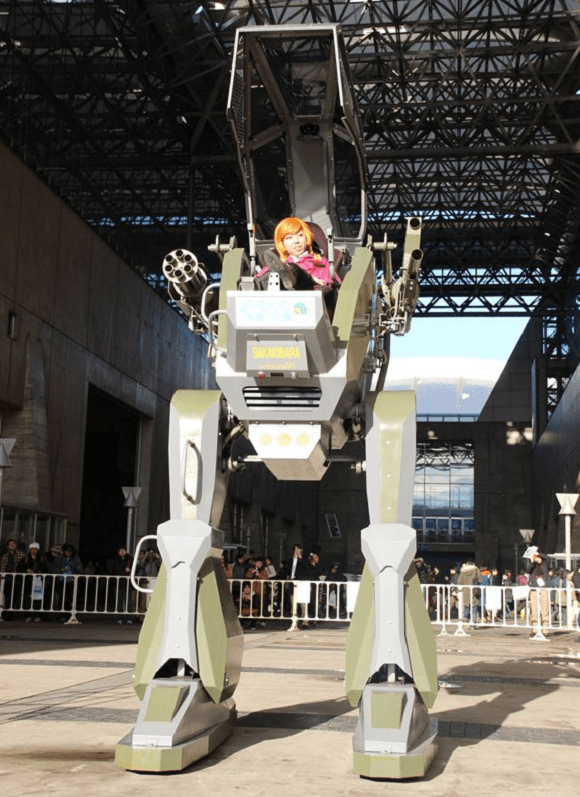
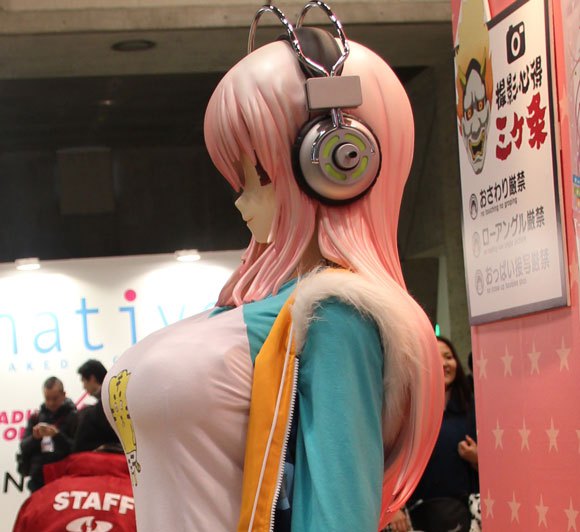
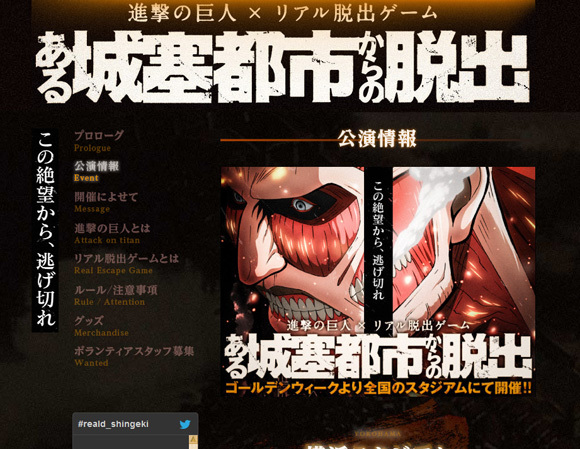
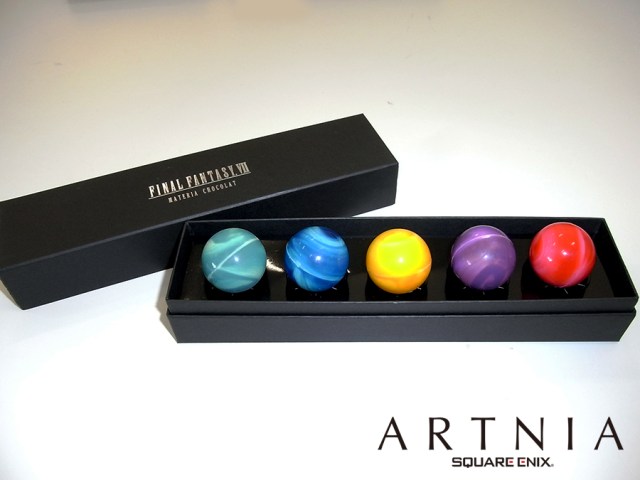
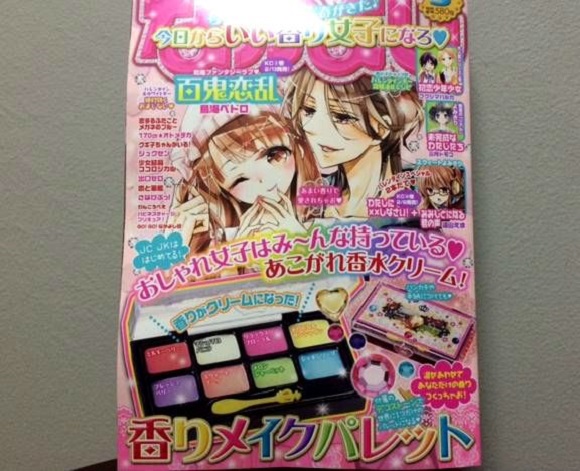


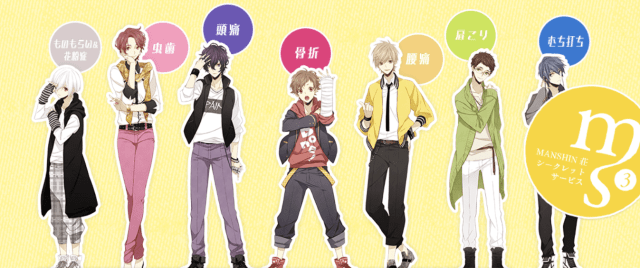
 Ghibli’s Princess Mononoke teams up with Foxfire for outdoor apparel collaboration【Photos】
Ghibli’s Princess Mononoke teams up with Foxfire for outdoor apparel collaboration【Photos】 Samurai ritual suicide contest cancelled by organizer in west Japan
Samurai ritual suicide contest cancelled by organizer in west Japan After cancelling Halloween, Tokyo’s Shibuya neighborhood cancels New Year’s Eve too
After cancelling Halloween, Tokyo’s Shibuya neighborhood cancels New Year’s Eve too Japanese job-quitting service contacted by other job-quitting service because employee wants to quit
Japanese job-quitting service contacted by other job-quitting service because employee wants to quit Made In Japan Fender Limited Edition Hello Kitty Stratocaster now on sale in Japan
Made In Japan Fender Limited Edition Hello Kitty Stratocaster now on sale in Japan Beautiful Japanese garden green tea crepes waiting in Tokyo’s historical Asakusa neighborhood
Beautiful Japanese garden green tea crepes waiting in Tokyo’s historical Asakusa neighborhood Sanrio and magical girl anime PreCure join forces for new merch line【Photos】
Sanrio and magical girl anime PreCure join forces for new merch line【Photos】 Mario Kart Happy Meal toys arrive at McDonald’s Japan, and SoraNews24 has the whole set!【Photos】
Mario Kart Happy Meal toys arrive at McDonald’s Japan, and SoraNews24 has the whole set!【Photos】 Tokyo park’s sea of clouds, nighttime illumination, and cosplay days make now perfect time to visit
Tokyo park’s sea of clouds, nighttime illumination, and cosplay days make now perfect time to visit Katsu weight showdown! Which Japanese supermarket gives you the most tonkatsu meat for your yen?
Katsu weight showdown! Which Japanese supermarket gives you the most tonkatsu meat for your yen? Ghibli Park debuts first winter illumination display with Howl’s Moving Castle theme
Ghibli Park debuts first winter illumination display with Howl’s Moving Castle theme Tokyo restaurant isn’t kidding about the name of its overflowing rare wagyu-ju【Photos】
Tokyo restaurant isn’t kidding about the name of its overflowing rare wagyu-ju【Photos】 New Ghibli papercraft kit gives you a little Princess Mononoke forest on your desk【Photos】
New Ghibli papercraft kit gives you a little Princess Mononoke forest on your desk【Photos】 Pringles releases a limited-edition sweet flavour in Japan
Pringles releases a limited-edition sweet flavour in Japan Starbucks releases new Wicked tumblers in Japan
Starbucks releases new Wicked tumblers in Japan Off-the-beaten-tourist-track observatory tower in Tokyo has great views of the city…for free!
Off-the-beaten-tourist-track observatory tower in Tokyo has great views of the city…for free! Japan’s Pokémon donuts are evolving as Diglett grows into Dugtrio churro!
Japan’s Pokémon donuts are evolving as Diglett grows into Dugtrio churro! Nintendo’s controller capsule toys are so cool, even the machine you buy them from is awesome【Pics】
Nintendo’s controller capsule toys are so cool, even the machine you buy them from is awesome【Pics】 Tokyo Disneyland loses top-attendance crown for Japanese theme parks for second year in a row
Tokyo Disneyland loses top-attendance crown for Japanese theme parks for second year in a row Adult Jam Bread causes a stir at store in Tokyo
Adult Jam Bread causes a stir at store in Tokyo What’s the deal with akebi, the perfectly purple, alien-like fruit that’s in season now in Japan?
What’s the deal with akebi, the perfectly purple, alien-like fruit that’s in season now in Japan? Kyoto becomes City of Yokai, with Night Parade of One Hundred Demons festival this autumn
Kyoto becomes City of Yokai, with Night Parade of One Hundred Demons festival this autumn Totoro, Calcifer, other Ghibli stars returning as humidifiers ahead of Japan’s dry winter days【Pics】
Totoro, Calcifer, other Ghibli stars returning as humidifiers ahead of Japan’s dry winter days【Pics】 McDonald’s new Happy Meals offer up cute and practical Sanrio lifestyle goods
McDonald’s new Happy Meals offer up cute and practical Sanrio lifestyle goods Foreign tourists on Shinkansen bullet train break suitcase etiquette, angering local passengers
Foreign tourists on Shinkansen bullet train break suitcase etiquette, angering local passengers [Deleted] Article written for April Fool’s Day 2018
[Deleted] Article written for April Fool’s Day 2018 Japanese government to make first change to romanization spelling rules since the 1950s
Japanese government to make first change to romanization spelling rules since the 1950s Foreigner’s request for help in Tokyo makes us sad for the state of society
Foreigner’s request for help in Tokyo makes us sad for the state of society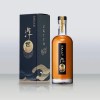 Ghibli founders Toshio Suzuki and Hayao Miyazaki contribute to Japanese whisky Totoro label design
Ghibli founders Toshio Suzuki and Hayao Miyazaki contribute to Japanese whisky Totoro label design Japanese convenience store Family Mart announces abolishment of eat-in spaces
Japanese convenience store Family Mart announces abolishment of eat-in spaces Princesses, fruits, and blacksmiths: Study reveals the 30 most unusual family names in Japan
Princesses, fruits, and blacksmiths: Study reveals the 30 most unusual family names in Japan Doraemon found buried at sea as scene from 1993 anime becomes real life【Photos】
Doraemon found buried at sea as scene from 1993 anime becomes real life【Photos】 Life-size vibrating Legend of Zelda Master Sword for sale from Nintendo【Photos】
Life-size vibrating Legend of Zelda Master Sword for sale from Nintendo【Photos】 Beautiful Japanese garden green tea crepes waiting in Tokyo’s historical Asakusa neighborhood
Beautiful Japanese garden green tea crepes waiting in Tokyo’s historical Asakusa neighborhood Sanrio and magical girl anime PreCure join forces for new merch line【Photos】
Sanrio and magical girl anime PreCure join forces for new merch line【Photos】 Mario Kart Happy Meal toys arrive at McDonald’s Japan, and SoraNews24 has the whole set!【Photos】
Mario Kart Happy Meal toys arrive at McDonald’s Japan, and SoraNews24 has the whole set!【Photos】 Tokyo park’s sea of clouds, nighttime illumination, and cosplay days make now perfect time to visit
Tokyo park’s sea of clouds, nighttime illumination, and cosplay days make now perfect time to visit Katsu weight showdown! Which Japanese supermarket gives you the most tonkatsu meat for your yen?
Katsu weight showdown! Which Japanese supermarket gives you the most tonkatsu meat for your yen? Is Tokyo’s ultra-expensive Satsuki sweet bean bread worth it?【Taste test】
Is Tokyo’s ultra-expensive Satsuki sweet bean bread worth it?【Taste test】 Tanuki bread arrives at Japanese bakeries with a sweet surprise and steals our hearts【Photos】
Tanuki bread arrives at Japanese bakeries with a sweet surprise and steals our hearts【Photos】 New Donkey Kong area at Universal Studios Japan gets opening date, and it’s VERY soon【Video】
New Donkey Kong area at Universal Studios Japan gets opening date, and it’s VERY soon【Video】 Japanese Prime Minister once criticized deploying military to fight Godzilla
Japanese Prime Minister once criticized deploying military to fight Godzilla Tokaido Shinkansen Sushi Journey Bento takes your taste buds on a trip from Tokyo to Osaka
Tokaido Shinkansen Sushi Journey Bento takes your taste buds on a trip from Tokyo to Osaka Do 7-Eleven Japan’s new back-to-budget-friendly-basics rice bowls make us happy?【Taste test】
Do 7-Eleven Japan’s new back-to-budget-friendly-basics rice bowls make us happy?【Taste test】 Mister Donut, Kyoto tea merchant create new line of treats, with one that’s two desserts in one
Mister Donut, Kyoto tea merchant create new line of treats, with one that’s two desserts in one What’s the most popular way to prepare Japan’s beloved breakfast dish, Tamago Kake Gohan?
What’s the most popular way to prepare Japan’s beloved breakfast dish, Tamago Kake Gohan? New sushi restaurant hidden inside Tokyo Station is a secret gem
New sushi restaurant hidden inside Tokyo Station is a secret gem